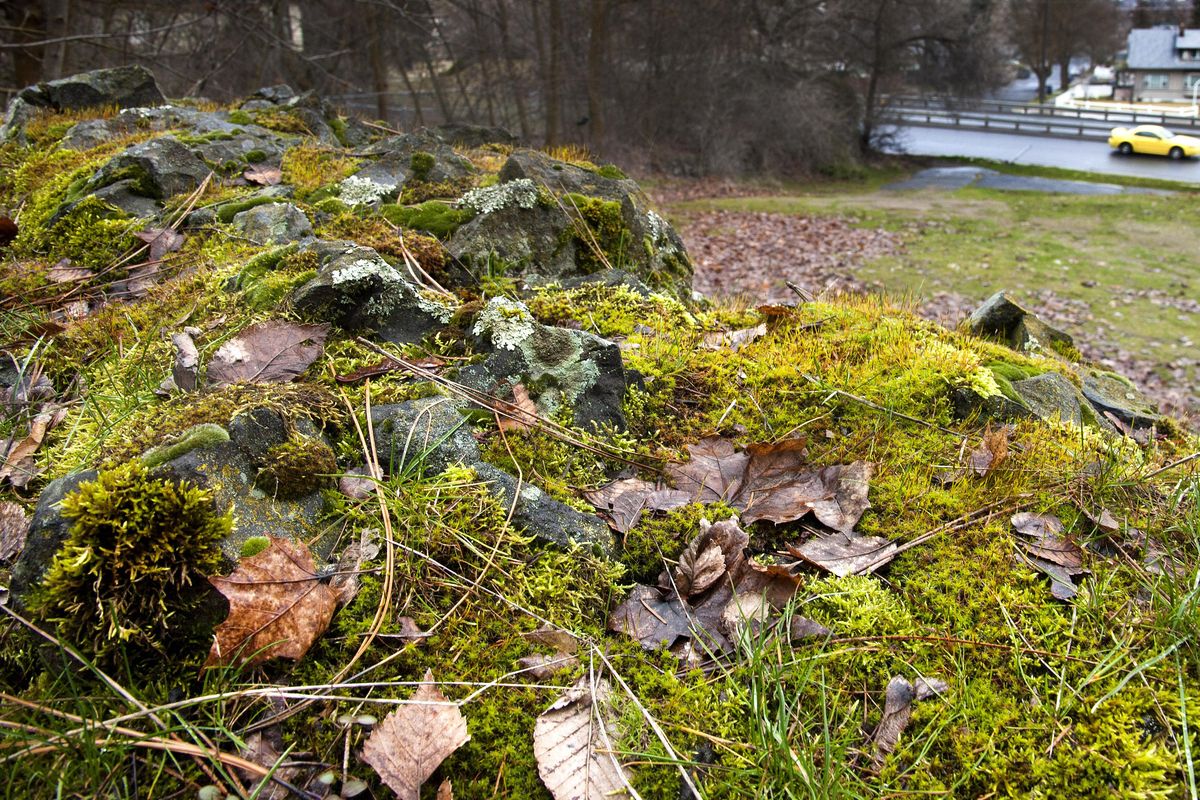As city expands Drumheller Springs, tribes work to improve the North Side park

For countless years, Drumheller Springs was a popular spot for wayfarers, the only location with clean, fresh water between Spokane Falls and the confluence of the Spokane and Columbia rivers nearly 50 miles to the west.
Native people camped at the spot, once noted for its edible and medicinal plants, their last stop before heading to the falls for the summer.
Since the city of Spokane acquired the park in 1968, however, the spring has mostly been an ignored and forgotten aspect of regional history, more of a littered thoroughfare and homeless encampment than cultural touchstone.
But for the last five years, workers and volunteers from Upper Columbia United Tribes have reclaimed the park and are attempting to revert it to what it once was: a biological and cultural garden.
“We’ve basically adopted the park,” said Mark Gauthier, the tribal group’s forest practices coordinator, who is leading the restoration effort. “It’s owned by the city, but we’re taking full-time care of the park.”
Gauthier has counted 175 distinct plant species in the 12-acre park, half of which are native, such as black hawthorn and balsamroot. The group sweeps the park and collects garbage. Last summer, they removed an old concrete pond near the spring thought to be the work of a bygone Eagle Scout. The pond, Gauthier said, collected more than water.
“You wouldn’t believe what we found in there,” he said.
Last week, the Spokane Park Board approved the transfer of a city-owned parcel to the park department, an expansion that adds new land adjacent to the historic springs and offers the park new prospects.
“That piece of ground offers a fantastic opportunity,” Gauthier said. “It’s basically like a lawn. It’d be a perfect space for having a Spokane tribal event there.”
Until recently, that third of an acre had a house sitting on it, but after a fire and a foreclosure, the city took possession of the land. Councilwoman Candace Mumm, who joined the Park Board this year as the council’s liaison, noticed the parcel on the city’s list of surplus properties it intended to sell. Mumm brought the property to the Park Board’s attention, and city officials agreed the land should be in parks’ hands.
“It was not a tough decision,” said Chris Wright, president of the park board. “The idea was let’s take it and preserve it because it’s an important historical piece.”
The region’s first people frequented the spot for hundreds of years, but after European descendants arrived in the area, the area near the spring featured another notable Native American contribution: the region’s first school, run by Chief Garry of the Spokane Tribe.
A plaque sits near the park, detailing Garry’s contributions with the school, to relations between Indians and early settlers and as an influential figure in Spokane history.
Gauthier said the ultimate goal is to make the park a learning place once again, with interpretive signs and opportunities for field trips, which would teach people about the native plants and wildlife, and the springs’ central place in Native American history.
“I conduct field trips there, mainly young tribal folks but anyone can come,” Gauthier said. “But fighting invasive plants, that’s our constant battle.”
In the park’s upper section, invasive grasses and yellow-stemmed willows have proven to be the most difficult to deal with. The grasses are hard to control and remove, and neighbors like the willows.
“I’ve spoken with people who grew up around there. They used to be able to swim in those ponds,” Gauthier said about the upper ponds. “They have receded over the years. Those invasive willows have sucked the water out of them.”
Gauthier said his plan is to remove the willows over the course of many years, and replace them one at a time with a native tree, but that’s just a concept.
In the park’s lower section – where the spring and new parcel sit – Japanese knotweed has spread. Gauthier said he opposes the use of herbicides, but the knotweed is a resilient foe.
Tony Madunich, the park department’s operations manager, credits Upper Columbia United Tribes with opening up the springs. Besides removing the pond, which Madunich said “wasn’t very attractive and difficult to maintain,” the group built a staircase leading down to the springs.
“They’ve done a lot of work providing access down to those springs,” Madunich said, noting that the group re-channeled the spring’s stream back to a more natural state.
Michael Smith, who has owned and lived in the house overlooking the springs and new park parcel since 1999, said he and other neighbors have tried to keep the park clean over the years, but the tribal group’s work has made a big difference.
“They really do a nice job of maintaining it,” Smith said, adding that a homeless couple set up camp recently and left behind some garbage. “If you leave a little, more will come.”
Smith, who called the park a “very spiritual place,” said he wanted more Native American presence in the park, especially better explanations of the long Native history there. He believes such history would draw more people and perhaps keep all the litter at bay.
But to return Native history to the park, it may need a new name.
Decades after Garry and his school left the land, the spring was taken over by Dan Drumheller. According to a Dec. 7, 1966, article in The Spokesman-Review, Drumheller was a “very colorful early pioneer stockman” who erected a slaughter house on the flat immediately below the spring in 1880 because “he needed a large quantity of clear, cold water for the operation.”
The spring is named after this settler but has also been known as Lone Pine Spring and Garry Spring. Gauthier said that will change.
“The tribes are working on and should be coming out pretty soon with a new name for the park,” Gauthier said. “It will be more tribally based.”